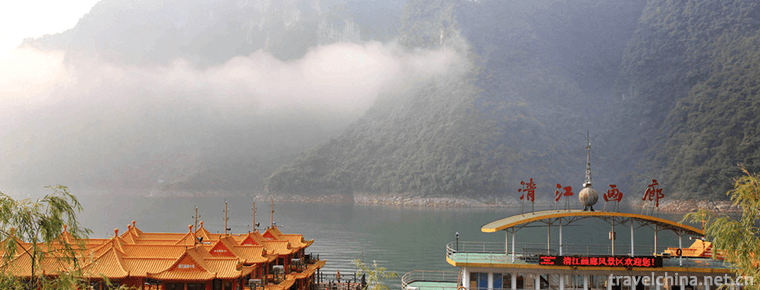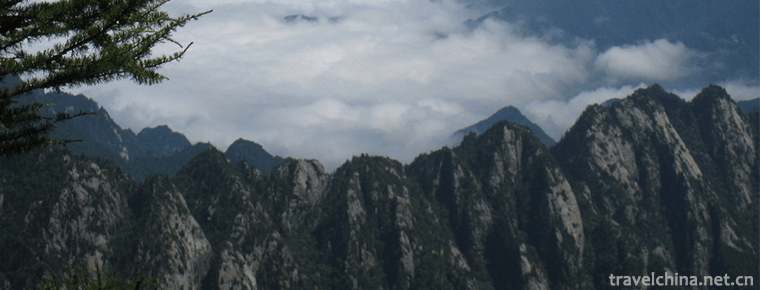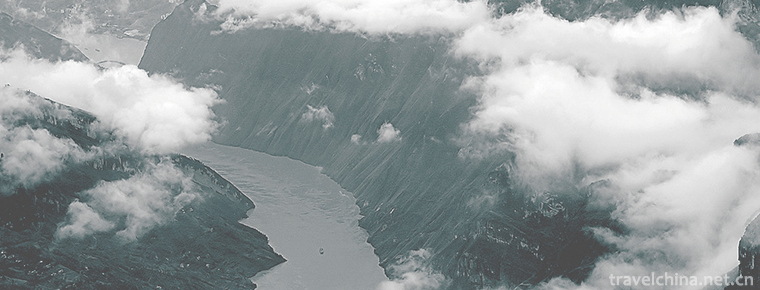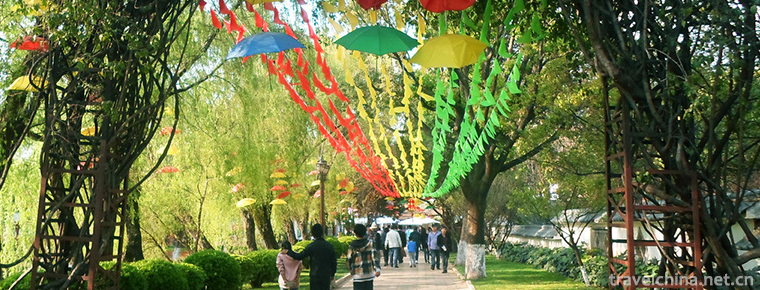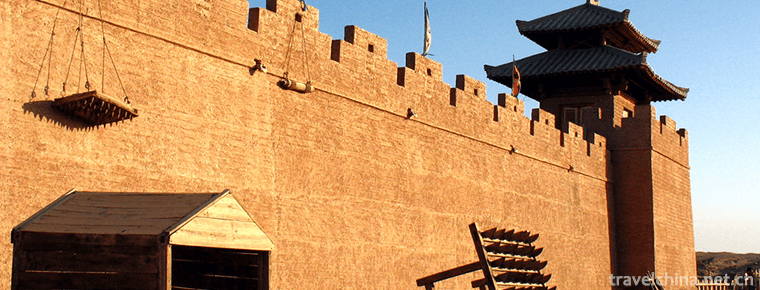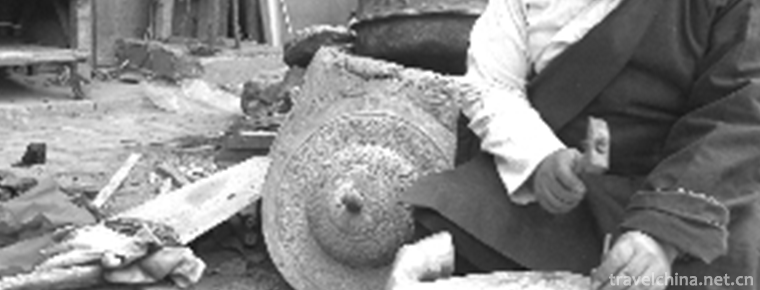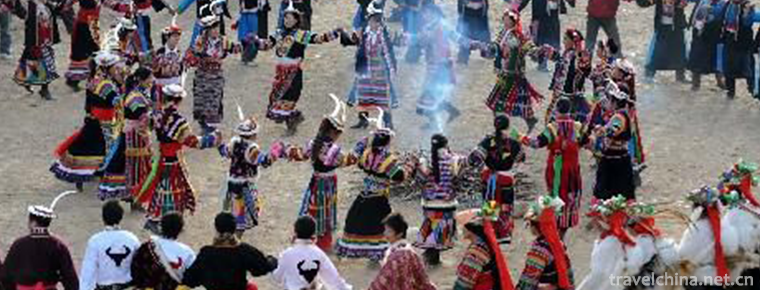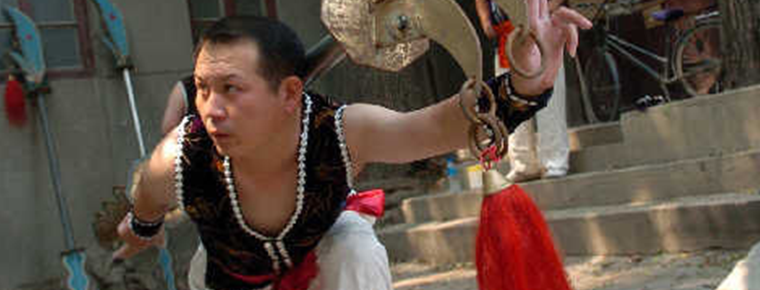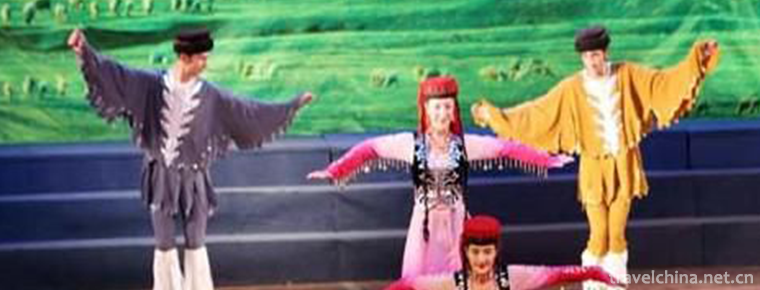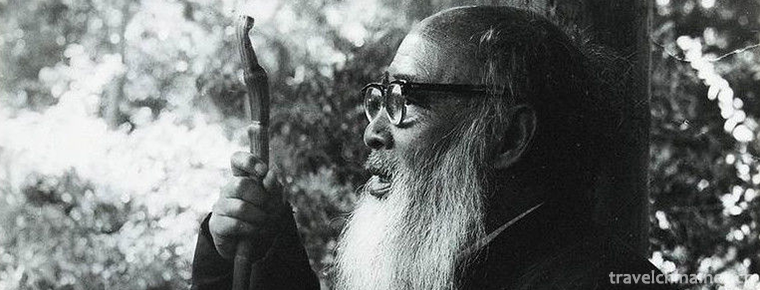monologue storytelling accompanied by drumbeats
monologue storytelling accompanied by drumbeats
Plum blossom drum, born in the middle of the Qing Dynasty, originated in Beijing, is popular in Beijing and Tianjin. Before liberation, the sons and daughters of Beijing Banner People liked to sing melodies that they were good at. Artists often sing in dismantling programs, but few of them specialize in this kind of music. The earliest are Zhong Wanqi, Jin Xiaoshan, and later Cao Baolu, Prince Jade and so on. Since Jin Wanchang came out, through its processing and innovation, this kind of music has been rejuvenated with new youth. Since then, it has also been divided into two schools: the North and the South; the former is conservative, simple, there is no difference between the upper and lower sentences, plain and unimaginable, Wang Xianchen and Liu Zhichen are good singers; the latter is the plum blossom tune created by Jin Wanchang, with a beautiful singing voice, and many excellent innovations, deeply appreciated by the audience, and gradually become the genre of this kind of music. The lyrics of Plum Blossom Drum are seven-character and cross sentences. They have three basic patterns of adagio, 26-board and upper-board, and three basic tunes named after the names of these three patterns.
On November 11, 2014, the Plum Blossom Drum was approved by the State Council for the fourth batch of national intangible cultural heritage lists.
Historical origin
During the Daoguang reign of the Qing Dynasty, one of the children of Beicheng Banner, Bajiao Drum Fellows, was named "Yurui", and his uncle was a hereditary left-collar. Singing this tune in the octagonal drum box office has gradually won the recognition of everyone, so it is called "Qingkou Dagu". Because his family lives near the Drum Tower in Beicheng, it may also be the source of the word "northern plum blossom". Yurui's elegant name is "the owner of plum blossom museum", also known as "northern plum blossom tune". Later, it gradually spread to the area of Nancheng outside Qianmen. There was a youngster named Wen Yusen, who had a bald head and was nicknamed Wen Bazi. Wen Yusen's Qingkou drum is very good, and has been accompanied by five kinds of musical instruments. The segments are Daiyu Siqin and Hundred Birds Chao Feng. Although the repertoire is few, this form is very important in the performance of octagonal drum, which also marks the complete formation of plum blossom drum on the northern board.
At the end of the Qing Dynasty, when the "North Ban Plum Blossom Tune" was introduced to Jin Wanchang and Wang Wenrui, they enriched the tune and the slab style in the singing process, especially in the accompaniment music and singing music, promoted by Han Yongxian and Su Qiyuan, and formed the three-fold up, three-fold down, drum covers and the big door over the slab. This stage developed with the development of the performance, and then passed through. Han Yonglu, Huo Lianzhong and Han Deshou (the eldest brother of Han Defu, the founder of the plum blossom drum crossing the door . With the development of other people, the plum blossom drum is just like a big drum. In order to distinguish the original "North Plum Blossom Tune", the opposite name is "South Plum Blossom Tune". At this time, the name of "Plum Blossom Drum" has naturally become a foregone conclusion.
Over the past decades, with the changes of the times, the artistic forms of plum blossom drums have been brought into full play by famous artists, forming a distinctive situation of style and genre. The development of tunes and music is mostly improved by some famous choreographers, not because of one's efforts to form a genre. As Mr. Wang Wenrui said to me personally, "At that time, I tuned more than a dozen sections of plum blossom to Wanchang. He was a famous actor, singing much better than me. Fame and fortune are nothing, as long as things ring, they are better than anything. The fire is high when people gather firewood!" So Mr. Wang Lao is also one of the founders of the Jin School (Jin Wanchang) plum blossom drum. The plum blossom drum reached its peak in the 1920s and 1930s. The plum blossom tune in the southern plate was richer than that in the northern plate, and the cross-board music was also fancy and lively. Drum sets and cross-board music are also many, making the southern plum blossom tune sounds much better than the northern plum blossom tune. Later, this form of singing became more and more intense, almost no more people sang the northern plum blossom tune, so the northern plum blossom tune gradually lost its transmission. I have heard it only once since I was eighteen years old. It was "An An Sen Mi" sung by Sun Maozhi, a blind artist at the Qianmen Small Theater in 1957 at the first Beijing Quyi Festival.
Form of performance
The basic formula of the plum blossom drum is to add four, six or eight lines of essay at the beginning, then to the adagio. After singing several "falls" (i.e. passages), it is followed by "fearful" and "pheasant skating" (faster than the Adagio beat), then to turn "up the board" (the adagio), and then to sing a few lines at the end of the book after the accent. If the sign is added, it is usually added in front of the "pheasant slip". In the old days, the "Horse" sign was often added after the end.
The performance form of plum blossom drum is drum beating and storytelling for one person, and then there is duet singing. It also has a unique form - five-tone duet: the drum board of the actor division, the four bands cooperate with each other and play five instruments. From the left, the first person plays the dulcimer with his right hand and the third one with his left hand; the second person plays the three strings with his right hand, and the third person plays the four-hu strings with his left hand; the third person plays the four-hu with his right hand and the lute with his left hand; the fourth person plays the pipa with his right hand and the second dulcimer with his left hand. The actors sang short passages, between which the band played songs such as Liu Qingniang and Wannianhuan respectively. Plum blossom drum is good at expressing emotions in narrative. Its singing tones are melodious and graceful, lively jumping, slow, steady and winding at the end. The sentence pattern of the lyrics is basically seven-character sentences, some of which are crowned with three-character prefixes, and occasionally five-character sentences in the allegro. Sometimes there are also some music cards inserted. This practice was initiated by Han Yongzhong, an artist and choreographer in the late Qing and early Ming Dynasties. For example, timid embroidery takes the melody of plum blossom as the beginning and end of the tune, and adds some music cards in the middle, such as Taiping Year and Silver Niu Si, to form an integrated repertoire.
main features
The common characteristic of each artistic school of plum blossom drum is that it is good at expressing feelings in narration. Its adagio, mid-board, voice tactfully turning to listen; fast board, tight board, lively and powerful; the end of the adagio steady and residual sound. The sentence pattern is basically seven-character sentences, occasionally with three-character prefixes, sometimes with five-character sentences in the clapper board. Sometimes, long and short sentences are inserted according to the content. Individual programs such as "Fear Embroidery". In addition to singing the tune of plum blossom, the whole piece is composed of "Taiping Year", "Yin Niu Si", "Hu Guang Diao" and other brand songs. Plum blossom drums are mostly sung by one person. Some traditional programs such as "Xiangzishou", "Qiujiang" and "Zhangyu Boiling the Sea" can also be sung by two people. Actors play drum boards by themselves. Accompanied instruments include three strings, four hus, Pipa and dulcimer. Many of the traditional melodies of plum blossom drum are based on Dream of Red Mansions, such as Tang Qingwen, Zhu Daiyu, Daiyu Betraying Autumn, Daiyu Burying Flowers, Baoyu Exploring Diseases, etc. In addition, there are "Goose Pick-up Letter", "Mirror Frame" and "Mulian Save Mother" and so on. The new catalogues include "Embroidered Red Flag", "Jiang Jie Jinshan", "Qianli Dike Farewell", "Half Pingshan", "Tragic Wedding", "Erquan Yinyue" and so on.
A plum blossom drum actor must have "singing skills" and "fighting skills" (drumming skills). It doesn't matter how much action he performs. Its audibility lies in the strong musicality of this kind of music, the positioning degree of the three strings is not high or low at the same time, and the sound of fingering is good to play. In the aria there are bigger "triple ups and downs, door crossings and drum covers", which sounds very addictive. These are all its charms. The forms of performance are also varied. In addition to singing by one person, there are also "double plum blossom", "male and female pair singing plum blossom", "group singing plum blossom", "holding a lantern plum blossom (including a big drum) and so on. In addition, there is a change of hands "five-tone joint plum blossom", that is, the players change their hands, pull, play, hit cards , , , , . The inventor of the joint bomb was born in the box office of his children in the late Qing Dynasty. After hundreds of years of successive generations, most of the famous scholars continued to develop. Mr. Hendershou (elder brother Henderford) developed the "Horse Trumpet" melody, which is said to be borrowed from the military songs and the tunes of the military trumpet. Mr. Huo Lianzhong and Guiqiuhua and the organ have their own merits. In the 1940s, Mr. Luchengke played "triple turn" and added "pop song" tone, which was welcomed by the audience and caused a sensation.
Because of these characteristics, plum blossom drum is an indispensable music in Beijing and Tianjin. It is past to sing the plum blossom drum in Beijing's professional folk art group, and the performers who specialize in singing the plum blossom drum are almost extinct. Although the plum blossom drum is rare at the box office, there are also a few ticket-holders on the stage to sing. Li Yansheng has been striving to pursue "plum blossom" for more than ten years. Every row must sing "Daiyu Funeral Flower", "Baoyu Probe into Diseases", "Daiyu Siqin" and other songs, aiming to study plum blossom and climb a higher level. Zhi Shuyan and Naxin sang the new plum blossom "Dragon Girl Listening to the Qin" beautifully. Mr. Xu Shaolan, Mr. Zhang Yajun and Mr. Xu Cunzhi also sang the plum blossom drum. Mr. Du Sanbao, a 70-year-old disciple of Mr. Wang Wenrui, went to the box office to sing "Save Mother by Eye Lotus Monk" and "100 Birds Chao Feng", which shows that the "plum blossom drum" among Beijing ticket-holders will not fall. Although the actual "plum blossom" in Beijing is in the off-season, I think, since it is called plum blossom, it is not afraid of cold, pride snow can blossom, maybe buds will have a day. Hope that the ticket-holders who like the plum blossom drum will work harder to learn more and practice more, and will sing better results in the duel. "Clear mouth big drum" originally developed among the voters, it will never be extinct at the box office.
Traditional tracks
There are 33 pieces of traditional Meihua drum repertoire, mostly provided by Wang Wenrui, a Meihua drum artist in the late Qing Dynasty, which was handed down to Jin Wanchang after modification by Deshoushan, a single-string artist. Among them, Daiyu Siqin, Daiyu Funeral Flowers, Daiyu Beiqiu, Baoyu Probe into Diseases, Advising Daiyu, Daiyu Going to Heaven, Qingwen Buqiu, Tangqingwen and Farewell Zicuckoo are selected from A Dream of Red Mansions. Other themes of the music, including "Goose Pick-up Book", "Mirror-throwing Frame", "Zhaojun out of the fortress", "timid embroidery", "Han Xiangzishou" and so on.
After the founding of the People's Republic of China, the newly compiled repertoires include Copying Red, Dragon Girl Listening to the Piano, Qiujiang, Yulinglong, etc. Since 1950s, performers of plum blossom drum have included Cao Baolu, Zhao Yuming, Long Jieping, Xin Lanyun, Liu Shuhui, etc. .
Inheritance significance
Plum blossom drum, as an important kind of northern drum, is widely loved by music lovers. Its significance of inheritance is extraordinary.

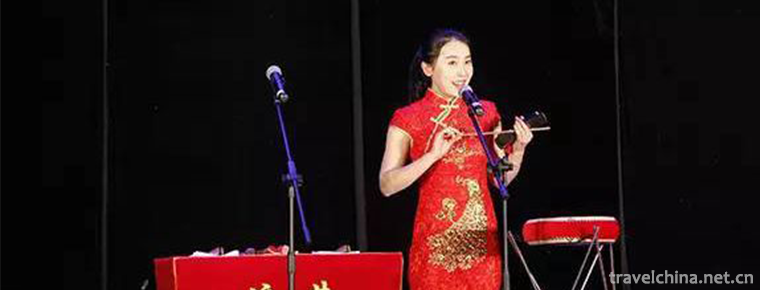
-
Qingjiang Gallery Scenic Area
Qingjiang Gallery Scenic Area, National AAAAA Class Tourist Area, National Geopark, National Forest Park, Ten New Brands of National Cultural Tourism, Ten Best Scenic Areas in Hubei Province, and Hube.
Views: 139 Time 2018-12-12 -
Taibai Mountain National Forest Park
Taibai Mountain, National AAAAA Tourist Scenic Area, National Forest Park, National Water Conservancy Scenic Area, Ten National Sports Tourism Scenic Spots, Ten Best Holiday Areas of "Beautiful C.
Views: 174 Time 2018-12-12 -
Wushan small Three Gorges
The Little Three Gorges, or the Little Three Gorges Tourist Scenic Spot, was named "Forty Best Tourist Resorts in China" in 1991, "National AAAA Tourist Scenic Spot" in November 20.
Views: 150 Time 2018-12-12 -
Grand View Park
Daguan Park is located in the Dianchi Lake, about 2 kilometers west of Kunming City. It was built in the first year of Hongwu in the Ming Dynasty (1368 A.D.). In the thirty-fifth year of Emperor Kangx.
Views: 189 Time 2019-01-06 -
Yumen Pass Yumenguan
Yumenguan was named after Emperor Wudi of Han Dynasty when he opened the Western Regions Road and set up four counties in Hexi. The Han Dynasty was a gateway to all parts of the Western Regions..
Views: 205 Time 2019-03-06 -
Tibetan Cobalt Technology
Zhang Zhaxi, a Tibetan cobalt-smelting craftsman over half a century old, told reporters that he was just "catching its tail" when the craft was losing its popularity..
Views: 164 Time 2019-04-15 -
Panda Dance
Panda dance is a traditional dance originating in Jiuzhaigou County. Every year on the 15th and 16th of the first lunar month, some of the Baima Tibetans wear panda masks to exorcise evil spirits. .
Views: 112 Time 2019-04-26 -
Hui Heavy Knife Wushu
Heavy knife is the original name of big knife. It is a traditional weapon around Beijing and Tianjin. It has a history of thousands of years in China. The original name of Jinmen.
Views: 168 Time 2019-05-04 -
Mongolian camel raising custom
The Mongolian camel-raising custom has a long history. In the practice of production and life with a long history, camel has become the most loyal partner of mankind while making outstanding.
Views: 84 Time 2019-06-04 -
Tajik Eagle Dance
Tajik Eagle Dance, a folk traditional dance in Tashkurgan Tajik Autonomous County of Xinjiang Uygur Autonomous Region, is one of the national intangible cultural heritage..
Views: 236 Time 2019-06-17 -
Liubeichi Park
Liubeichi park is located at No.4 Minjiang East Road, Yibin City, with an area of 238.18 mu. It is a national AAAA tourist attraction. It is a famous scenic spot and a key Park in Sichuan Province..
Views: 150 Time 2020-10-16
